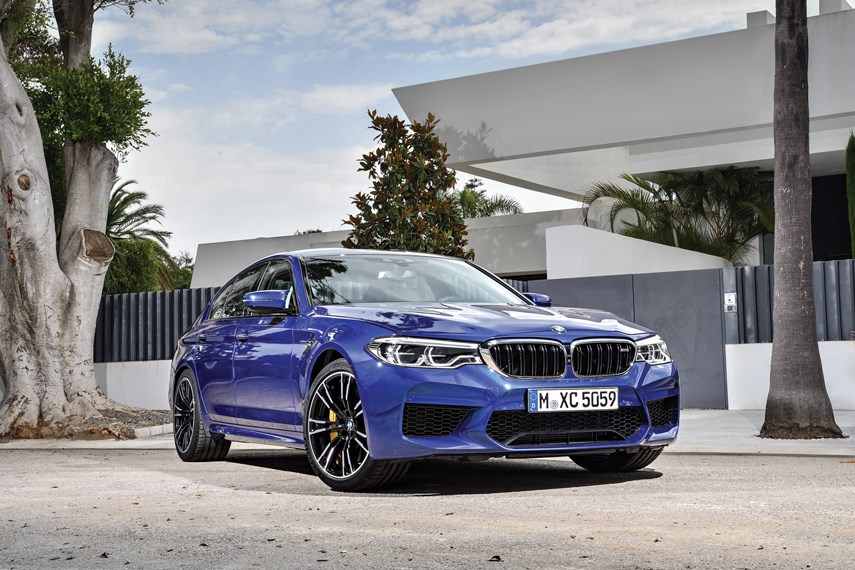Having taken my driving test in a 1980s 535i, and grown up in a family where there was never not a 5 Series in the driveway (usually purchased gently used), it’s safe to say that I have a deep affection for BMWs.
Of course, the double-edge to that affection is the magnifying glass of nostalgia, which tends to magnify any faults by comparing them to the fondly remembered past.
Thus, this new M5 has big shoes to fill. Not only is it supposed to be the top of the range for the 5 Series, and thus the best of the model, it finds itself compared to every M5 over the past 30 years.
It’s not enough to be merely faster. BMW has discovered, to their dismay, that increasing the engineering prowess of their model lineup has resulted in increased sales, but perhaps a bit of a loss of focus. Where once nearly all BMWs seemed to drive a certain way, with a bit of driver-centric focus in even the lowest-powered models, now you have to look a little harder to find the “driver’s cars” in the BMW range.
Worse, this new M5 features all-wheel drive for the first time, which feels like a step away from the recipe that made Bavaria’s super-sedan a legend in the first place. The M5 doesn’t just have to outrun the competition, it also has to outrun the past. Let’s see how it does.
Design
From the first, the M5’s calling card has been the iron fist in the velvet glove. Yes, there are often clues for your average gearhead observer to spot, but overall an M5 has to convey subtlety more than speed.
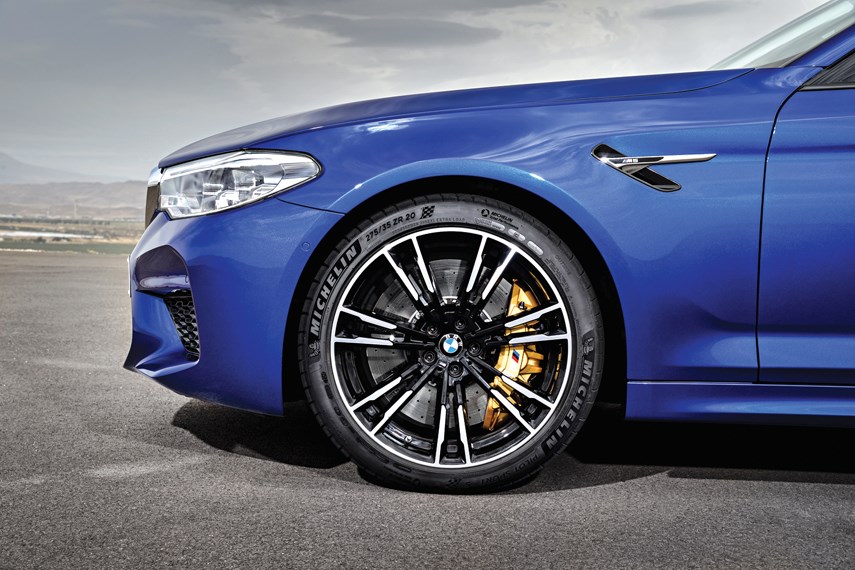
This new one actually does a pretty good job of hiding its afterburners under a bushel. There are four exhaust pipes out back, big 20-inch wheels, and more M badges than is strictly necessary, but the overall effect is not too shouty. There are no carbonfibre sideskirts or any of that sort of nonsense. Note: the competition-spec version does indeed get a bunch of the nonsense. Don’t bother.
Further, this generation of 5 Series seems like a step away from the over-styled BMW portfolio of the past. Think of the way an X6 hulks, or the GT versions are bulbous and awkward, both festooned with lots of little aerodynamic-look bits that don’t do much.
The M5 is relatively clean. Get one in a subtle colour, and avoid the yellow brake calipers, and you’d pass by in traffic unnoticed. Which is kind of the point.
Environment
Less cohesive, but filled with functionality, is the M5’s interior. Basically everything you used to get in a top-of-the-range 7 Series is available here, as the 5 Series long ago moved up a pay grade into full scale executive sedan territory.
As such, the M5’s interior is perhaps more a cabin than a cockpit. There’s plenty of space, the seats are very grippy, yet comfortable, and there’s a huge swathe of onboard technology. If the original M5 was a four-doored fighter plane, the new one feels like business class on an Airbus.
Having said that, BMW’s Lufthansa experience needs a little fine tuning. The dash isn’t quite the simplified experience you want in a sport-oriented vehicle, and the sheer amount of technology can be a bit overwhelming. This isn’t a car you jump into and take the reins immediately, there’s a learning curve here if you’re going to properly understand all the options. Make sure your dealership walks you through a proper introductory course.
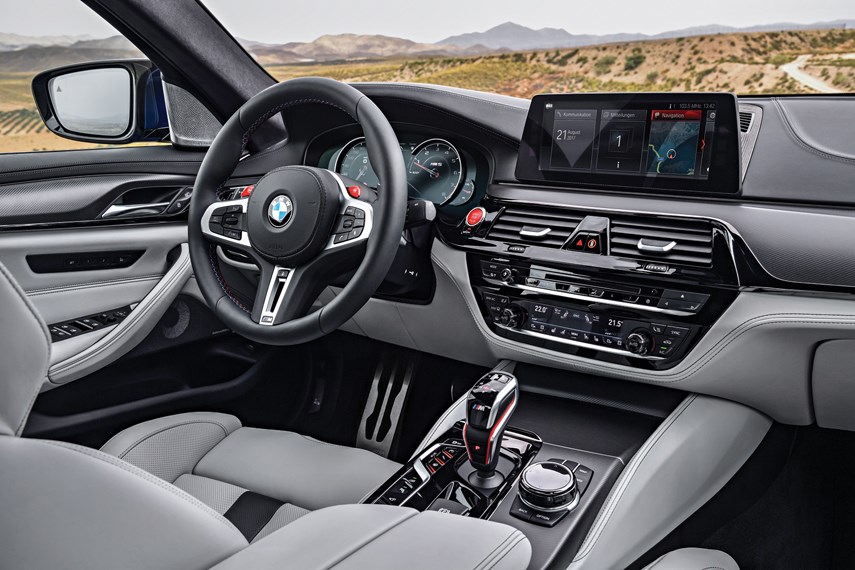
There are, however, a few cheats to make life easier. The twin red buttons on the steering wheel can easily be pre-set with your favourite recipe for the road. Have one for the twisty bits, and one for the commute, resting right at your thumb.
Additionally, features like gesture control, which lets you turn up the volume by twirling a finger, seem gimmicky at first but quickly become second nature. We didn’t really need a replacement for the volume knob, but it’s neat not to have to look for one.
Space is certainly ample, as while the new M5 isn’t larger than the previous generation, it was already easily large enough for families. The trunk is a useful 538 litres in size, and passenger room is within a hair or so of its chief rival, the Mercedes-AMG E63.
However, if AMGs were always about luxury and brute force, the M5 was supposed to be the driver’s choice. Time to press one of those little red buttons.
Performance
First, the power output, which is certainly a headline. The M5’s 4.4-litrre twin-turbocharged heart makes a whopping 600 h.p., which is a lot. 553 foot-pounds of torque from 1,800 r.p.m. dismisses its nearly-2,000 kilogram curb weight with ease, and the new all-wheel-drive system means that this big sedan accelerates like a McLaren.
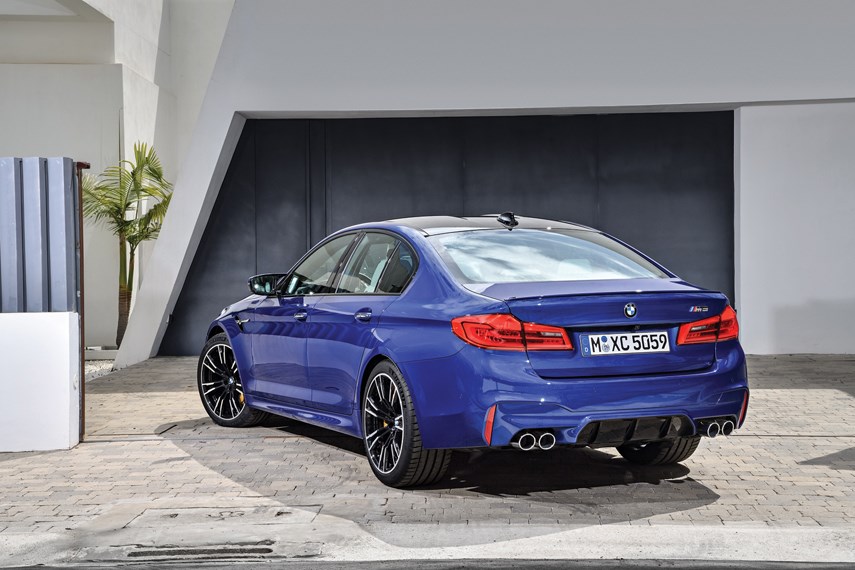
However, so does the E63, and if it’s straight-line speed we’re talking, there’s always the Tesla Model S, which features absolutely blistering electrified acceleration. Where the M5 needs to differentiate itself is when the road turns from straight to snake-with-hiccups curvy.
The good news out of the gate is that the M5 dispenses with a lot of the standard 5 Series cleverness. It’s simpler, and that’s excellent. Instead of complex variable steering that’s speed dependent, it gets a more conventional setup. The anti-roll bars aren’t active, but fixed. There’s no rear-wheel steering to trick the driver into feeling that the M5 is smaller than it is. There’s a conventional eight-speed automatic that’s well-tuned, rather than some complex new style of transmission.
Yes, you still get variable dampers and multiple drive modes. However, the overall simplicity of the M5’s layout seems to have allowed M’s engineers to spend more time tuning some joy back into this car’s suspension, and as a result, it actually feels playful.
Of course, a 600 h.p. car that’s playful seems like a bit of an oxymoron. It’s not like you can go drifting up every onramp and pretend like you’re going to get away with it.
However, while the M5 is imbued with that typical German weight and smoothness, intended to be a rock-solid isolation chamber on the autobahn at huge speeds, it’s also fun to drive at normal-person velocities. It feels lighter than it is, lively and fun.
From an engineering standpoint, that clever all-wheel drive is capable of splitting the torque evenly front to rear, but maintains a distinctly rearward bias. It’s got the grip you want when it’s slippery, but also definitely feels rear-driven, as you’d want from your M car.
On the track, it’s reportedly hugely competent. However, most M5s won’t see a track. With the previous generation car, hitting a solid lap time seemed to have been a priority, at the expense of feel on the street.
This new M5 is a little faster, but the overall change is how likable it is as a daily proposition. As a return to the all-rounder principles that founded the M5 in the first place, it’s a winner. It feels special whenever you drive it, and you can drive it pretty much whenever.
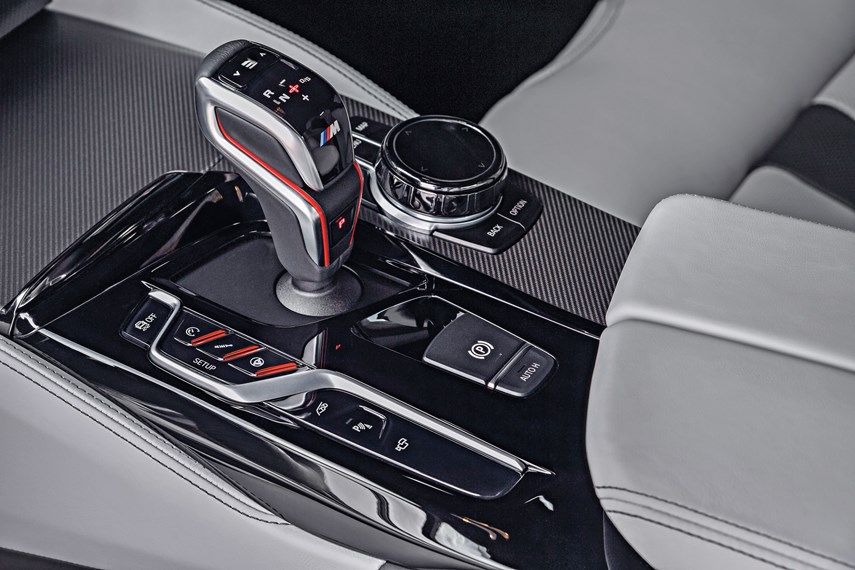
Features
It’s not cheap though. The M5 costs $113,300 to start, and as with all German marques, the options add up quickly. Add in niceties like soft-close doors and adaptive cruise control, and your M5 is more like a $120,000 proposition. However, as it’s basically a sports car married to a family sedan in one vehicle, maybe you can make the case that you’re saving on parking?
Fuel economy rates are not bad at all for a car with power levels similar to an exotic. Official figures are 16.7 litres/100 kilometres in the city, but just 9.4 l/100 km on the highway. Naturally, hitting these targets requires the sort of forbearance M5 owners are not traditionally known for.
Green light
Huge power; excellent handling; plenty of luxury; actually fun to drive.
Stop sign
Not quite as cushy as E63 AMG rival; expensive; still too quick for public roads.
The checkered flag
A super-sedan that lives up to modern standards while still staying true to its roots.
Competition
Mercedes-AMG E63 ($115,500): Mercedes-Benz’s AMG group started with a race car called the “Red Sow,” and then progressed to building V8-powered sedans like “The Hammer.” Put it this way: don’t look for finesse here.
Or, rather, do. AMG’s heavy firepower stuff is still a bit blunt-instrument-y, but it is also surprisingly competent. The E63 blends luxury and speed well, and also sounds just excellent. There’s even a wagon version, which is highly recommended.
Having said all that, the M5 does bring both the pace and a better balance, and has luxury to match the heavy-hitter Merc’. As time wears on, the two rivals grow closer in character, but there’s still a distinct character to both.
